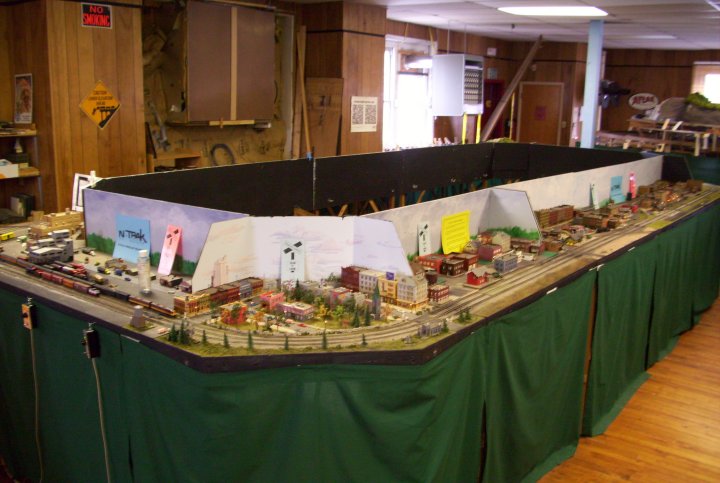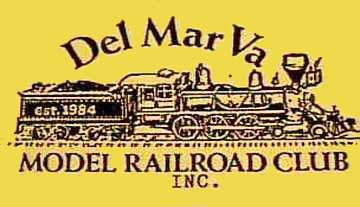
Built to N-Trak standards and specifications, each component of the N-modular layout was constructed by a member of the Delmarva Model Railroad Club. N-Trak modules may be separated, rearranged, transported, and connected to any other N-Trak layout in the country.
Every N-Trak module is 2 feet wide. The rectangular modules here are 4, 6, or 8 feet long. The 6-sided corner modules provide 90-degree turns. The total number of modules here is 12. Each module has three tracks. At the ends of the module, where one module connects to another, the distance between the middle of one set of tracks to the middle of the next set of tracks is 1.5 inches. The distance between the middle of the outer set of tracks to the edge of the module is 4 inches. These specifications allow the N-Trak modules here to be connected to any other module built to N-Trak standards.
N-scale has a 1:160 ratio. Something that measures 10 feet would be 3/4 inch in N-scale. The outer loop of the modules covers a total distance of 56 feet 6 inches, or 1.71 scale miles.
Each track is connected to a separate power pack that transforms 120 volt AC current to DC current with a maximum of 12 volts. Locomotive speed is controlled by the voltage, which measures the flow of electricity. Changing the polarity of the current supplied to the rails will reverse the direction of travel.
Inside the modular layout is another display, representing a logging operation. The locomotive that pulls the logging cars is a Shay engine. Developed to operate on steep terrains, Shay engines had a set of vertical cylinders on one side, and a system of gears provided power to the wheels. This design allowed Shay locomotives to climb a gradient of 15%, which is much steeper than 3% maximum for conventional steam locomotives.
